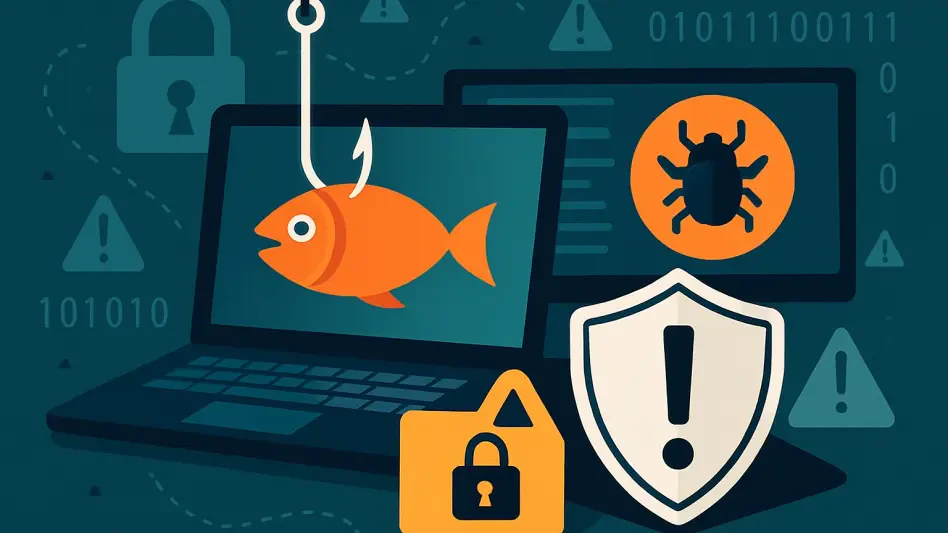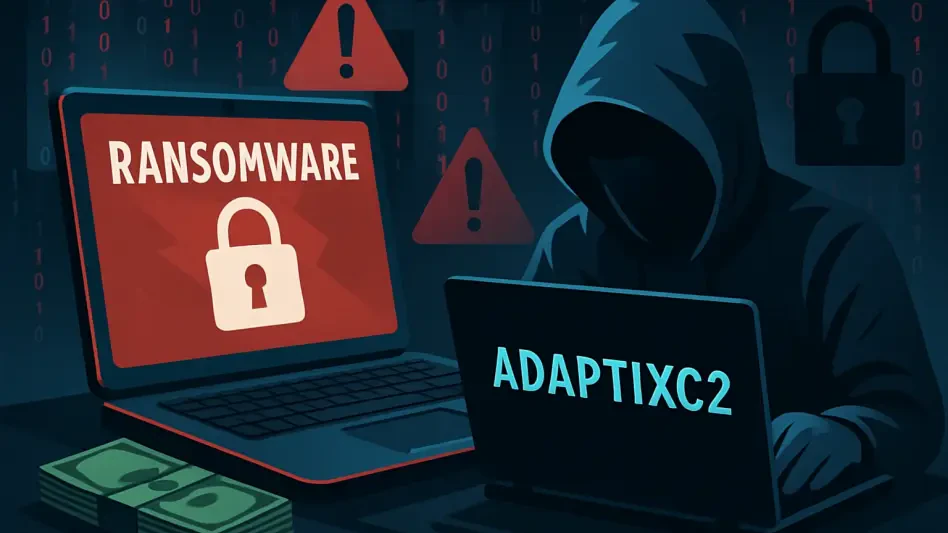In an era where digital threats are becoming increasingly sophisticated, the rise of AI-powered phishing attacks stands out as a critical challenge for organizations across the globe, demanding urgent and innovative responses. By 2026, the cybersecurity landscape is poised for a dramatic transformation, driven by artificial intelligence’s dual role in both enabling and thwarting these insidious attacks. This exploration delves into how AI is revolutionizing phishing, turning it into a faster, more cost-effective, and dangerously deceptive threat while exposing the vulnerabilities of traditional defense mechanisms. Drawing on insights from groundbreaking research, including a notable Reuters-Harvard experiment, the urgency of adopting AI-driven detection strategies becomes undeniable. As cybercriminals leverage cutting-edge tools to craft personalized scams and deepfake media, the stakes for businesses and individuals have never been higher. The need for innovative solutions to protect digital environments is not just a future concern but a pressing priority that demands attention now.
The Rising Danger of AI-Enhanced Phishing
The integration of artificial intelligence into phishing schemes represents a pivotal shift in the cybersecurity domain, creating threats that are more convincing than ever before. Generative AI tools can produce highly tailored phishing emails in seconds, devoid of the clumsy errors that once served as warning signs, such as misspelled words or awkward phrasing. Beyond text, the emergence of deepfake audio and video adds a chilling layer of deception, with attackers impersonating trusted figures like executives or family members over video calls or voice messages. This technological leap enables cybercriminals to exploit personal data scraped from social platforms or past breaches, crafting messages that resonate on a disturbingly personal level. By 2026, the failure to address these advancements could result in unprecedented breaches, as the scale and precision of such attacks continue to escalate, challenging even the most vigilant defenses with their uncanny realism.
Another alarming facet of this evolving threat is the accessibility of sophisticated phishing tools through Phishing-as-a-Service (PhaaS) platforms on the dark web. These subscription-based services lower the barrier to entry for would-be attackers, equipping even those with minimal technical expertise with the means to launch complex campaigns. The result is a staggering proliferation of phishing domains, with thousands of cloned login portals mimicking trusted services like major tech giants, designed to steal credentials from unsuspecting users. This democratization of cybercrime amplifies the frequency and reach of attacks, targeting global brands and eroding trust in digital interactions. As these platforms enable rapid deployment of deceptive sites, the sheer volume overwhelms traditional takedown efforts, underscoring the urgent need for adaptive strategies to counter a threat that grows more pervasive with each passing day.
Limitations of Conventional Security Measures
Traditional cybersecurity approaches, long reliant on signature-based detection systems, are proving increasingly ineffective against the dynamic nature of AI-driven phishing. These outdated methods depend on recognizing known patterns or identifiers, but attackers can effortlessly alter domains, subject lines, or message content to bypass static filters. Once a deceptive email slips through, the burden falls on employees to spot the threat, a task made daunting by the polished and contextually relevant nature of modern phishing attempts. Even subtle cues that once signaled fraud, such as poor grammar, are now absent, leaving users vulnerable to manipulation. This gap in protection highlights a critical flaw in current systems, as they fail to adapt to the rapid evolution of attack methodologies, exposing organizations to significant risks of data theft and financial loss.
Compounding this issue is the overwhelming volume of AI-powered phishing campaigns, which further strain existing defenses. Cybercriminals can generate thousands of new phishing domains or cloned sites within hours, targeting users across multiple platforms and geographies. While security teams scramble to dismantle one wave of threats, another emerges almost instantly, rendering reactive measures futile. This relentless cycle not only exhausts resources but also increases the likelihood of successful breaches, as human error becomes inevitable under such pressure. The inadequacy of conventional tools to keep pace with the speed and scale of these attacks emphasizes the pressing need for a paradigm shift in cybersecurity practices. By 2026, clinging to outdated solutions could prove catastrophic, as the gap between threat and defense continues to widen.
Building a Robust Defense with AI Technologies
To counter the escalating menace of AI-powered phishing, organizations must embrace a multi-layered defense strategy by 2026, integrating advanced technologies to address vulnerabilities. Natural Language Processing (NLP) stands out as a vital tool, capable of analyzing communication patterns to detect subtle linguistic anomalies that often betray phishing attempts. Unlike static filters, NLP adapts to evolving tactics, identifying deceptive messages even when traditional markers are absent. Additionally, User and Entity Behavior Analytics (UEBA) offers a critical safety net by monitoring for post-breach irregularities, such as unexpected logins or data access patterns, to limit damage. These innovations form a dynamic shield against adaptive threats, filling the gaps left by conventional systems and providing a proactive approach to security that is essential in today’s fast-paced digital landscape.
Beyond detection, the role of technology in mitigating phishing risks extends to real-time response and threat intelligence. AI-driven systems can correlate vast amounts of data to predict and prevent attacks before they reach end users, offering a preemptive edge over reactive measures. For instance, machine learning algorithms can track patterns across global phishing campaigns, identifying emerging trends and alerting organizations to potential risks. This predictive capability is crucial in an environment where attackers continuously refine their strategies to exploit new vulnerabilities. Investing in such cutting-edge solutions is no longer a luxury but a fundamental requirement for maintaining resilience. As cybercriminals leverage AI to scale their operations, defenders must harness similar tools to anticipate and neutralize threats, ensuring a balanced fight in the cybersecurity arena.
Strengthening the Human Element in Cybersecurity
While technology plays a pivotal role in combating AI phishing, the human element remains an indispensable component of a comprehensive defense strategy. Employees often represent the first line of defense, and their ability to recognize and report suspicious activity can make or break an organization’s security posture. Tailored training programs, utilizing realistic simulations that mimic actual phishing scenarios, equip staff with practical skills to identify even the most sophisticated threats. By focusing on role-specific exercises, such as teaching finance teams to spot fraudulent payment requests, these initiatives foster a culture of vigilance that significantly reduces the risk of successful attacks. Empowering the workforce in this way transforms potential vulnerabilities into strengths, creating a proactive barrier against deception.
Equally important is the need for continuous education to keep pace with the evolving tactics of cybercriminals. As AI enhances the realism of phishing attempts, static training sessions quickly become obsolete, necessitating regular updates and refreshers to maintain awareness. Organizations must prioritize ongoing learning, integrating lessons from recent attacks to refine their approaches and address emerging blind spots. This commitment to sustained readiness ensures that employees remain alert to subtle changes in attack patterns, from convincing deepfake calls to personalized email scams. By 2026, fostering a mindset of constant vigilance will be critical to minimizing human error, complementing technological defenses, and building a resilient framework that withstands the relentless ingenuity of AI-driven threats.
Charting the Path Forward in Cybersecurity
Reflecting on the rapid advancements in AI-powered phishing, it becomes evident that a transformative approach to cybersecurity is essential to counter the sophisticated threats that have emerged. By integrating AI-driven detection tools like Natural Language Processing and behavioral analytics, many organizations can successfully fortify their defenses against adaptive attacks. Employee training programs, grounded in realistic simulations, have proven instrumental in reducing human error, turning staff into a vital asset in the fight against deception. These combined efforts lay a strong foundation for resilience, demonstrating that a multi-layered strategy is not just effective but necessary. Looking ahead, the focus must shift to scaling these solutions, ensuring widespread adoption of innovative technologies, and fostering global collaboration to share threat intelligence. Only through such proactive steps can the digital ecosystem remain secure against the ever-evolving landscape of cyber threats by 2026 and beyond.








